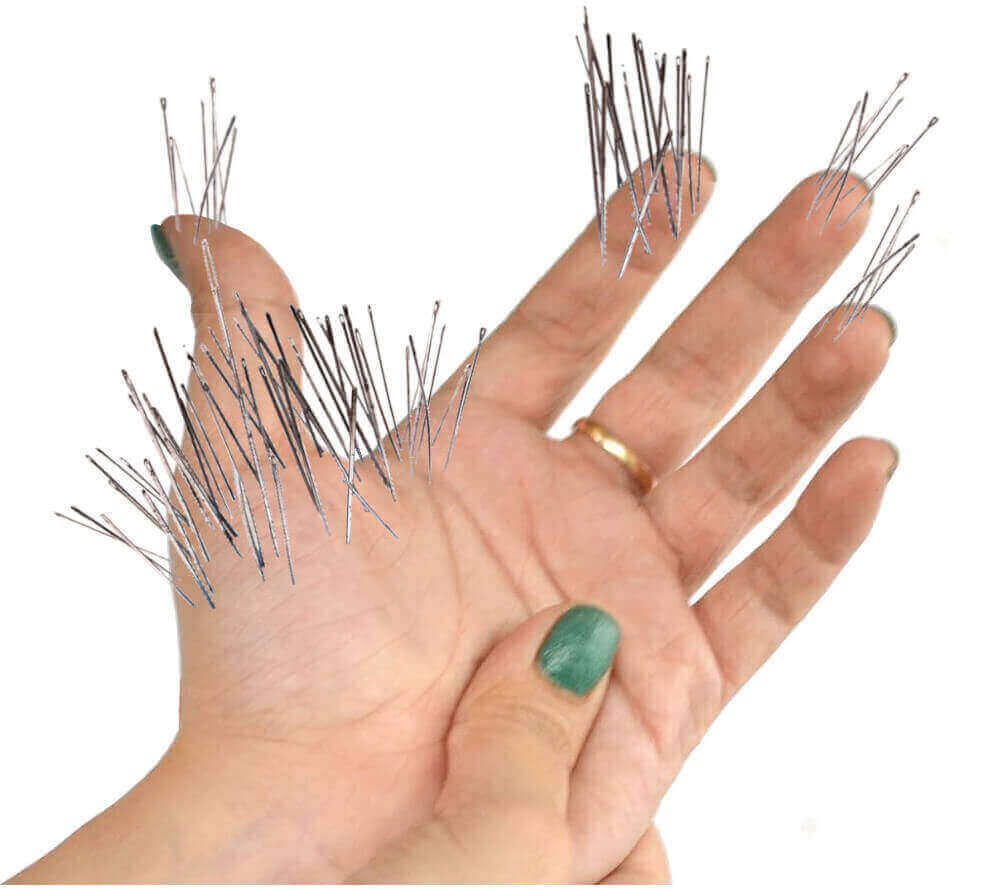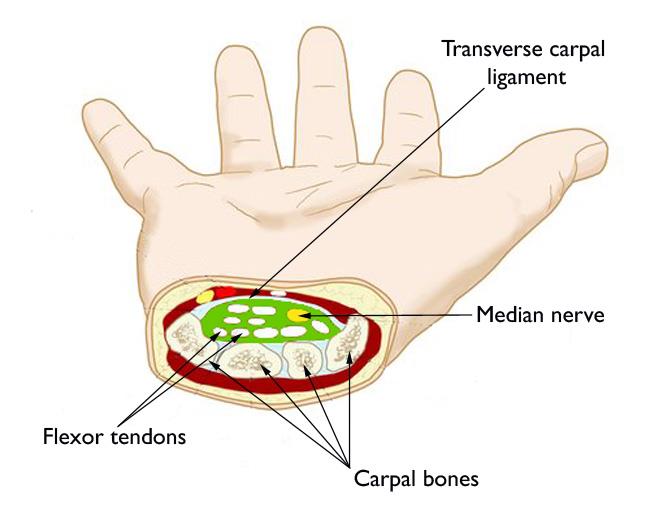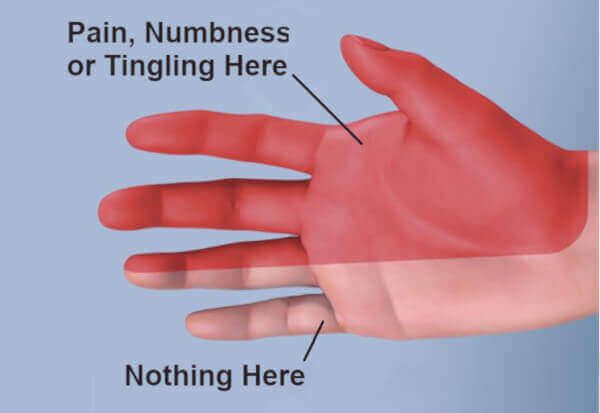Ultimate Guide to Carpal Tunnel Symptoms
From Dr. Z - Carpal tunnel syndrome specialist
Ultimate Guide to Carpal Tunnel Symptoms
The usual symptoms of carpal tunnel syndrome are pain, numbness, and tingling in the hand and fingers. For most people, the symptoms begin as numbness that wakes them up at night.
The intensity and location of carpal tunnel symptoms can vary from person to person. In the beginning, symptoms are usually merely annoying. And they're mostly confined to the palm of the hand and first three fingers.
As the condition worsens, the intensity of the symptoms increases. And as it gets even more severe, you may see new symptoms appear. For instance, if only numbness was present before, pain may appear now. Also, symptoms will occur during the daytime instead of only at night.
- FIND OUT: do you have carpal tunnel? No strings attached self-test.
In this ultimate guide to carpal tunnel symptoms, we’ll take a deep dive into everything carpal tunnel sufferers could ever possibly want to know about the many different symptoms they might be experiencing.
How does carpal tunnel syndrome happen?
It starts with tendon swelling
There is no consensus why one person gets carpal tunnel syndrome, but another doesn’t. However, medical science is getting clearer insight into how this disorder occurs. And it all begins with the wrist flexor tendons.
Under certain conditions, these tendons become stressed. It happens, for example, by making rapid, forceful, and repetitive finger motions for a long time. Examples are excessive typing, using hand tools, and holding ropes or handles.
Normally, tendons glide smoothly inside their sheaths in order to make fingers move. It's like a pencil gliding smoothly inside a straw. But sometimes, such excessive movement causes mechanical stress. This makes the tendons get “sticky”. That means they become less mobile inside their sheaths.
The tendon stickiness is produced by microscopic adhesions inside the tendon sheaths. These adhesions restrict movement and cause constant tugging between the tendon and the sheath. It's like the pencil getting stuck inside the straw. In turn, the restriction results in irritation and inflammation in and around the tendon.
This irritation can occur inside the wrist joint, in an area called the carpal tunnel (see diagram below). In this tightly confined space, the irritation invites excessive fluid build-up. This is when tendon swelling ensues.
As the swelling continues, the carpal tunnel space comes under high pressure, like a shaken soda can.
Swollen tendons then crush the median nerve
By itself, this swelling in and around the tendon is normally not a big problem - at least for most tendons. But for tendons inside the carpal tunnel space, the swelling causes an added problem. That is, as tendons swell, they push against the median nerve, which is located right next to the tendons.
Eventually, with enough fluid and pressure build up, the swollen tendons crush the nearby median nerve. A crushed nerve is like a pinched nerve: it produces sensations like pain, numbness, tingling, and weakness. Does that sound familiar?
In summary, carpal tunnel syndrome starts with swelling in the wrist tendon. This eventually crushes the median nerve. As a result, the crushing produces all of the carpal tunnel syndrome symptoms you experience.
Early Stage Carpal Tunnel Symptoms
Exactly what carpal tunnel symptoms feel like when the disorder first begins is easy to pin down. This is the "mild stage" of the disorder. The first signs are usually hand or finger:
- Pain
- Numbness
- Tingling
- Burning
- Shooting electric shocks
- Itching
- Puffiness feelings
- Hand weakness
- Finger clumsiness
Having ANY of these feelings is a sign of what carpal tunnel symptoms feel like during its mild stage. And when they begin, these symptoms usually occur only at night, when you're trying to sleep. Generally, pain or numbness keeps you awake.
Symptoms can go on like this for about 1-3 months. They can escalate gradually or become more intense overnight.
Moderate Stage Symptoms of Carpal Tunnel Syndrome
If you thought those initial mild or "onset" symptoms were bad enough, just wait! Without the proper treatment, carpal tunnel symptoms usually worsen significantly within 6 months.
After the "mild stage" comes the "moderate stage" and "severe stage" of the disorder. It's usually difficult for doctors to pinpoint the exact stage at this time.
These are whole different levels of discomfort. Before, during the mild stage, symptoms of carpal tunnel syndrome were tolerable. But as the condition advances, so does the numbness, tingling, and pain in your palm and fingers. Usually, the pain or numbness is described as "punishing" or "crushing."
Some patients call the symptoms "maddening". They often say, "I feel like cutting my hand off."
If you don't have functional problems (like losing strength or dexterity) in the beginning stage, you will. The advanced stages of carpal tunnel syndrome are characterized by more intense pain, numbness, and tingling. But most patients ALSO lose:
- Finger and hand strength
- Wrist strength
- Temperature sensitivity
- Manual dexterity
The moderate stage of carpal tunnel syndrome usually lasts the longest, 3-9 months on average. Pain or numbness is intense. But many patients manage symptoms with pain medicines, ice baths,
creams, etc. These provide only temporary relief.
In time, temperature sensitivity in the fingers (especially in the fingertips) decreases. Most doctors agree that if you're beginning to lose temperature sensitivity, you've begun the "severe stage"
of carpal tunnel syndrome.
Patients at this stage are advised to take precautions around the kitchen. Carpal tunnel patients with severe symptoms have been known to burn their fingers due to lack of sensation.

Advanced Stage of Carpal Tunnel Symptoms
There's one word to describe what carpal tunnel symptoms feel like when left untreated - "EXCRUCIATING."
This is the "end stage" of carpal tunnel syndrome. All symptoms are far worse than ever before. However, in an ironic twist of fortune, pain diminishes. That's because the nerve fibers carrying pain information are essentially dead. That means they no longer carry pain signals to the brain.
Loss of hand function in the end stage is catastrophic. The thumb is no longer capable of grasping, even lightly. In fact, this is when the thumb muscle atrophies (degenerates). You can see thumb muscle atrophy very easily (shown in the photo below). It's when the thumb muscle (the normally plump enlargement) at the base of your thumb flattens out and wrinkles.
The worst news of this stage is that almost nothing can be done for your symptoms. Most doctors will not even attempt surgery because of the extremely
low chances of success.
Treating Symptoms of Carpal Tunnel Syndrome
Most people with this disorder can restore their hand successfully - but only if it's caught early enough. The most reliable ways to treat symptoms of carpal tunnel syndrome fall into two basic categories:
- Non-surgical treatments
- Surgical treatments
Most doctors advise treating carpal tunnel syndrome with non-surgical therapies before considering surgery. In fact, this is the recommendation of the American Academy of Orthopedic Surgeons (who regulate hand surgery). There are several reasons for this conservative "surgery last" approach. They are:
- Carpal tunnel surgery provides relief in only 50% of patients.
- By the second year, the remaining 50% of patients see symptoms return again.
·
There are good non-surgical remedies developed over the past decade that are at least as effective as surgery. Often, they're more effective.

Non-surgical treatments for carpal tunnel syndrome
As the therapy name implies, non-surgical treatments aim to resolve symptoms of carpal tunnel syndrome without the need for a hand operation. The treatments most widely recommended by doctors are:
- Rest & avoidance
- Nocturnal wrist bracing
- Carpal tunnel stretching exercises
- Myofascial release massage
- Steroid injections
These treatments usually work quite thoroughly if your symptoms are just beginning (in the mild stage). Normally, just one type of non-surgical treatment will be effective.
However, many patients don't begin to treat symptoms until they become very bothersome. This means their condition has progressed to the moderate or severe stage of the disorder. When carpal tunnel symptoms are more intense, two or more of these non-surgical treatments are required to resolve symptoms completely. And even then, they must be applied more aggressively.
Conclusion
Carpal tunnel syndrome symptoms generally include numbness, tingling, and pain. Other symptoms can also join the mix. All symptoms stem from tendon swelling, which pushes on the median nerve deep inside the wrist joint. Most treatments for carpal tunnel syndrome attempt to reduce that swelling. They fall into nonsurgical and surgical categories.





